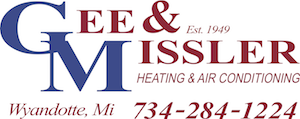Everyone’s always looking to save money on their utility bills, but it turns out there’s a way to do it when you aren’t even home.
It starts with your thermostat. By learning more about its special features and settings, you can tailor the temperature to your needs. That means you can have different temperature settings for when you’re home, away or even when you’re asleep.
With a few simple adjustments, you can enjoy comfy temperatures while cutting down your energy bills. Here are some ways your thermostat doesn’t have to use up all your summer spending money:
While at Home
When you’re home, you want comfortable temperatures. That’s why it’s best to set your thermostat lower in the summer if you’re indoors to make the most of the cool air.
But in terms of energy efficiency, the best range for the summer is in fact anywhere between 78 and 80 degrees Fahrenheit. By adjusting things a few degrees, you’ll avoid the worst of summer while still lowering your monthly energy bill.
While Out of the House
When it comes to setting the temperature for whenever you’re gone, the majority of homeowners will set the thermostat higher for while they’re gone.
If your home is located somewhere a little cooler, you can set the thermostat to higher temperatures like 88 degrees while no one is home before lowering it back to the sweet spot of 78-80 degrees when you or a family member return. This way, your air conditioning won’t have to work constantly to keep an empty house cool.
While Sleeping
To enjoy a good night’s sleep during the summer, you want your thermostat set at a comfortable temperature. You should try and keep things between 68-72 degrees Fahrenheit. This will keep you from getting too hot or too cold while you’re trying to sleep.
Other Strategies for Lowering Energy Use:
- Smart thermostat installation: Switching to a smart thermostat in the summer helps save money on energy costs by automatically adjusting to your lifestyle and idea of what comfortable is. A smart thermostat manages the temperature if you are home or sleeping, while allowing it to get warmer when no one is around. Using reputed brands and models such as the Lennox iComfort, you have the ability to remotely access and change the temperature through your smartphone, tablet or laptop. Planning smart thermostat installation in your Wyandotte home is an effortless way to set the correct temperature no matter where you are.
- Upgrade your HVAC system: A new HVAC system can save money in the long run. If a system boasts high energy efficiency, you can also count on lower utility bills since more efficient equipment requires less energy to reach your preferred temperatures. Air conditioning installation in Wyandotte is only a phone call away, so don’t hesitate to reach out to local pros like Gee & Missler Heating & Air Conditioning who can set you up for success.
- Keep up with AC maintenance: Hiring a skilled professional to perform regular air conditioning maintenance in Wyandotte can have a big impact on your monthly energy use. With regular cleaning of the coils, checking for damage and clearing ventilation of dust and debris, this can help your HVAC system perform better during day-to-day use.. More efficient operation reduces strain on key parts and lowers operational costs, leading to lower energy usage, which translates into lower energy bills.
- Replace your air filter regularly: A regular schedule for cleaning or replacing the HVAC system’s air filter saves money by improving airflow. When filters are old and less effective, your air conditioner will have to work harder, and this greater strain could shorten the system’s life span and result in breakdowns.
- Confirm your attic is sufficiently insulated: Insulation is a crucial component for any energy-efficient home, securing the hot air outside and the cool air inside through summer. The North American Insulation Manufacturers Association (NAIMA) recommends that homes in the southern United States should possess at least 13-14 inches of insulation, while colder climates do better with 16-18 inches.
- Inspect your ductwork: A leak in the air ducts could increase your energy bills much more than 20 percent, plus it can affect equipment such as your water heater, clothes dryer and other appliances to get into the atmosphere of your home. Watching for signs of leaks and sealing them can fix both of those problems.
- Seal all other leaky spots in your home: Sealing up other leaks in your home with caulk, foam sealant or weather-stripping helps keep things cooler during those hot summer days. You should also check for any gaps around windows, doors and even outdoor fixtures. Devoting time and effort to sealing leaks now can help you save a lot in the long term.


